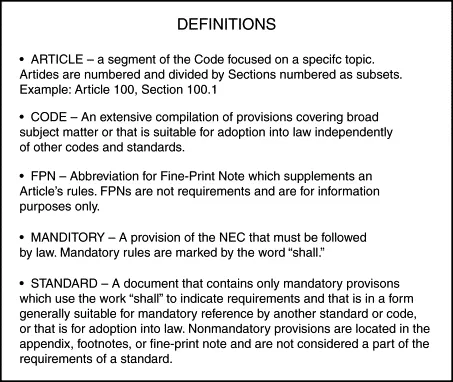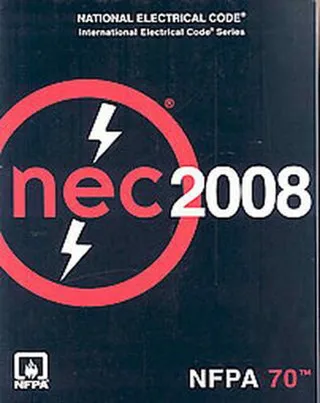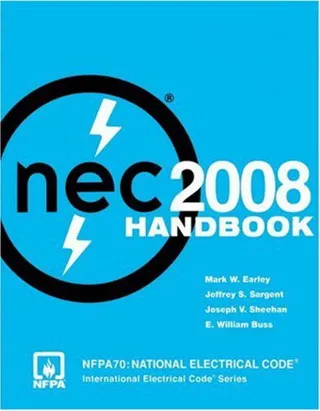The national electrical code
The NEC establishes regulations for the installation of electrical conductors, equipment, raceways, and signaling and communications systems. The code covers public and private premises including homes, buildings and structures, mobile homes, recreational vehicles, and floating buildings. Installation locations include yards, parking lots, carnivals, and industrial substations. The NEC also sets standards for the installation of conductors and equipment that connect to electricity supplies, and installations used by electrical utilities such as office buildings, garages, warehouses, machine shops, recreational buildings, and other structures that are not an integral part of generating plants, substations, or control centers (Figure 1.1).
NFPA’s Committee on the NEC consists of 20 code-making panels and a technical committee that develops and updates the NEC. In order to draw on the collective wisdom of the international community, the code panels have members from countries other than the United States, as well as members of the world’s leading professional association for the advancement of technology which is the Institute of Electrical and Electronics Engineers, Inc. (IEEE). The NEC is formally identified as ANSI/NFPA 70 and is approved as an American national standard by the American National Standards Institute (ANSI). Even with it setting minimum standards, the NEC is the least amended model code. Changes to the code are typically made to allow for new technologies or to combine or clarify existing standards.
Composed of an introduction, nine chapters, annexes A through G, and an index, the NEC groups standards in a logical progression. The introduction explains the purpose and general rules for overall electrical safety and enforcement. Safeguarding people and property from hazards arising from the use of electricity is the primary purpose of the NEC. Distinctions are made between establishing safety provisions included in the NEC and additional effort that might be necessary for installations to be efficient, convenient, or adequate for good service or future expansion. In this way, the code establishes a baseline for installation practices, while making clear that it is not intended to be a design specification or instruction manual (Figure 1.2).
Article 90 of the NEC describes what the code does and does not cover, how it is arranged, and distinguishes between mandatory rules, permissive rules, and explanatory material. Governmental agencies that regulate construction processes, such as the municipality in which a project takes place, are identified as the authority having jurisdiction (AHJ) and are given a degree of enforcement flexibility by the code. Additionally, products that are listed, such as underwriters listed (UL) can be assumed to be adequate for their stated purpose and do not have to be inspected again, except for alterations or damage.
The first four chapters cover definitions and rules for installations for voltages, connections, markings, circuits, and circuit protection; however, voltage drop requirements are not covered. Standards for methods and materials for wiring, devices, conductors, cables, as well as general-purpose equipment including cords, receptacles, switches, and heaters are also outlined in the first four chapters of the NEC.
The next three chapters focus on special occupancies, ranging from multiple-family units to high risk installations, as well as specific equipment such as signs and machinery, and special conditions including emergency systems and alarms. Chapter 8 is dedicated to additional requirements for communications systems and Chapter 9 is comprised of tables that further clarify requirements for conductors, cables, and conduit properties. The appendix provides calculations, examples, and explanations of implementation of code articles, such as how many wires fit in a conduit.
In addition to the NEC book, an NEC Handbook is published which is the equivalent of an annotated edition of the NEC. The handbook offers insights and explanations of new and more difficult articles and provides a guide to interpreting and applying current code requirements to various types of electrical installations. Expert commentary explains the rationale behind the standards and offers practical, hands-on advice on how to comply with regulations. It contains color-coded commentary that is set apart from the mandatory NEC provisions and summaries of key changes in each article (Figure 1.3).



